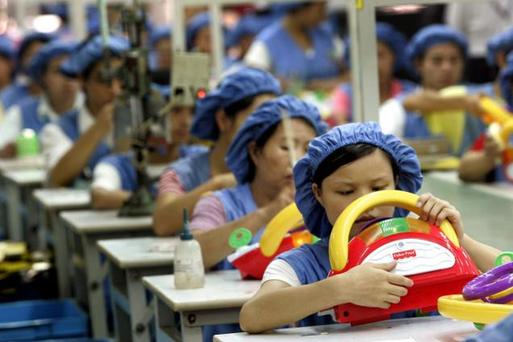Asian economies need to tread varied paths to growth
 0 Comment(s)
0 Comment(s) Print
Print E-mail Xinhua, September 10, 2013
E-mail Xinhua, September 10, 2013
There is no one-size-fits-all method to sustained economic growth for developing Asia, and Asian economies need to each find a development path most suitable for themselves.
|
 |
|
Workers assemble toy cars on the production line at a toy factory in Dongguan, China. [File photo] |
The latest ADB publication, "Asia's Economic Transformation: Where to, How and How Fast?," released late last month, said that while the region has experienced rapid growth in the last 50 years, such growth had been uneven.
East Asian economies including Japan, China, South Korea and Singapore transformed to become modern industrial and service economies. Other Asian economies, however, are not as prosperous.
"Some Asian economies appear to not have industrialized significantly and have weak supply chains. As a consequence, their economic structure has not deepened," the ADB report said.
The report's author, Jesus Felipe, said in a recent briefing that it's not easy to discuss the Asian economy in general given the vast differences among its many economies.
"Asian countries will find it difficult to industrialize in the coming decades precisely because today's world is very different from the one South Korea or Singapore faced in the 1970s-1908s," Felipe said.
Felipe, advisor to the Chief Economist in ADB's Economics and Research Department, noted that industrialization is a necessary but not sufficient, path to economic growth.
He cited the small Pacific island economies which may have a hard time pursuing the path towards industrialization and may just pursue developing niches in the service sector.
In his ADB report, Felipe suggested several ways on how different Asian economies can pursue their particular growth path.
Countries where the farm sector employs a big share of its workforce such as Bangladesh, Pakistan and Thailand need to develop industries.
China and India need to invest more in science and engineering, directing their efforts toward innovation and not on just making inexpensive versions of existing goods.
The Philippines can escape the middle income trap by deepening its industrial base so as to complement its booming services sector.
"The Philippines has done well recently and I am optimistic about the future of the economy," Felipe said, alluding to the stunning growth posted by the Philippines in the past few quarters.
"My suggestion to ensure that (Philippine) growth continues is to develop a larger manufacturing base. This is the surest way to create employment and reduce poverty," he added.
Small, low-income economies such as Cambodia, Laos and Nepal can benefit from their comparative advantage in labor-intensive activities.
Kazakhstan, which is rich in natural resources, needs to manage those resources well and think about diversification.
Despite the varied paths to growth, Felipe said developing Asian economies can learn three crucial lessons from the rapid growth of East Asia. Emerging economies, he said, "must not neglect agriculture. This is where development starts. (They should also) achieve a significant level of industrialization and focus efforts on the quality of primary and secondary education."
Felipe said the agriculture sector needs to industrialize - to develop agribusiness industries and adopt modern farming method - to be more productive and provide jobs with higher wages and help in reducing poverty.
Felipe said in his ADB report that it's important to develop the manufacturing sector as industrialization is "nearly essential " for an economy to achieve high income levels.
"No country has achieved high-income status without its manufacturing sectors reaching at least an 18 percent share of total employment. Modern industrial and service economies have manufacturing at their core," Felipe said in his ADB report.





